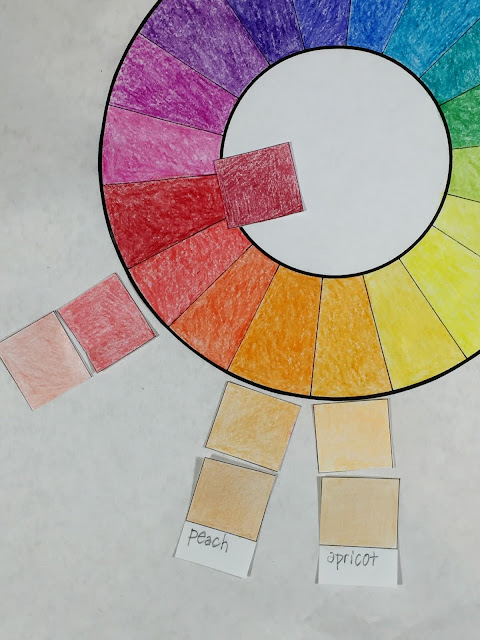The Answer (7 of 8)
The reason these colors don't seem to fit in the natural progression of color around the wheel is that they are composed of more than the three primary colors. The color wheel presents the pure spectrum of colors (also known as hues), but when we add white, or black, we are changing their value. So, when white is added, we have a tint of the pure color (or hue), and adding black, we get a shade of that color.
Let's break some colors down...
You are probably familiar with two popular colors: peach and apricot. Side by side, they seem pretty close to each other, don't they?
We know they belong on the warm side of our color wheel and we know that they are lighter than the hues on the wheel, which means they include white. It might surprise you to know that peach is actually a tint of orange and apricot is closer to a tint of yellow orange. Traveling toward red, right around orange red, I would place mango, which is a little lighter, and then melon which seems to have even more white. Is any body else noticing a pattern here with the names?... yummy colors on the warm side... Move up the wheel and you can see that I've placed brick red next to red because it seems to me that it is darker and contains a bit of black.
The easiest way to check out the value of any given color is to compare it to a gray scale:
(Switched my medium to color pencils, since it gave me more gray gradations.)
Mango and melon next to the gray scale.
Here you can see that the primary blue is an approximate match to the middle gray on our scale, and the baby blue swatch is close in value to the next lightest square on the gray scale.
Like spokes in the wheel we can move outward, slowly adding more white to create all the tints from any color. We could easily also create a wheel that gradually adds more and more black in the same manner, showing the shades of that color. Taken together the tints and shades of a color can be thought of as the "family" of the one color that appears on the wheel we have been considering.







.jpg)
Comments
Post a Comment